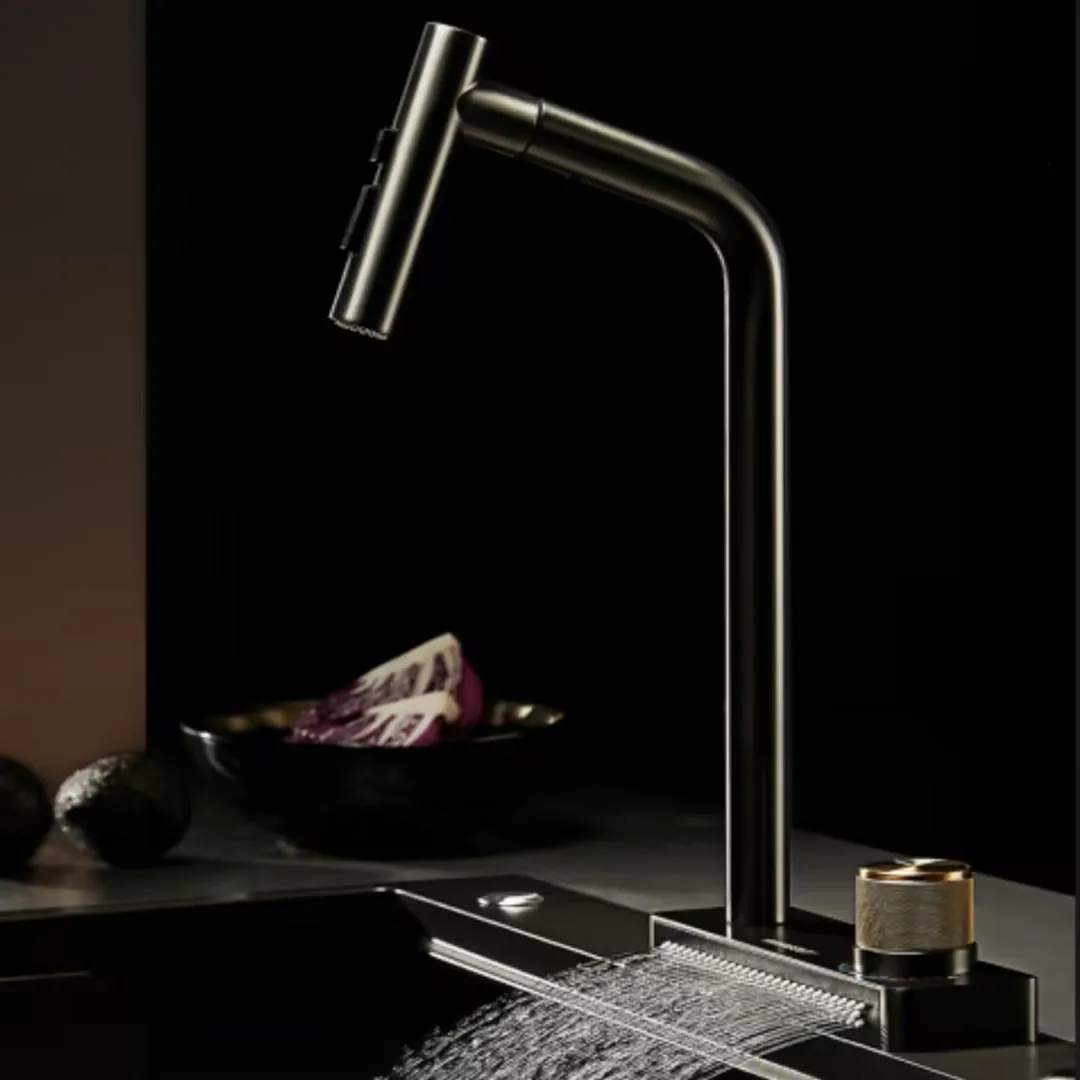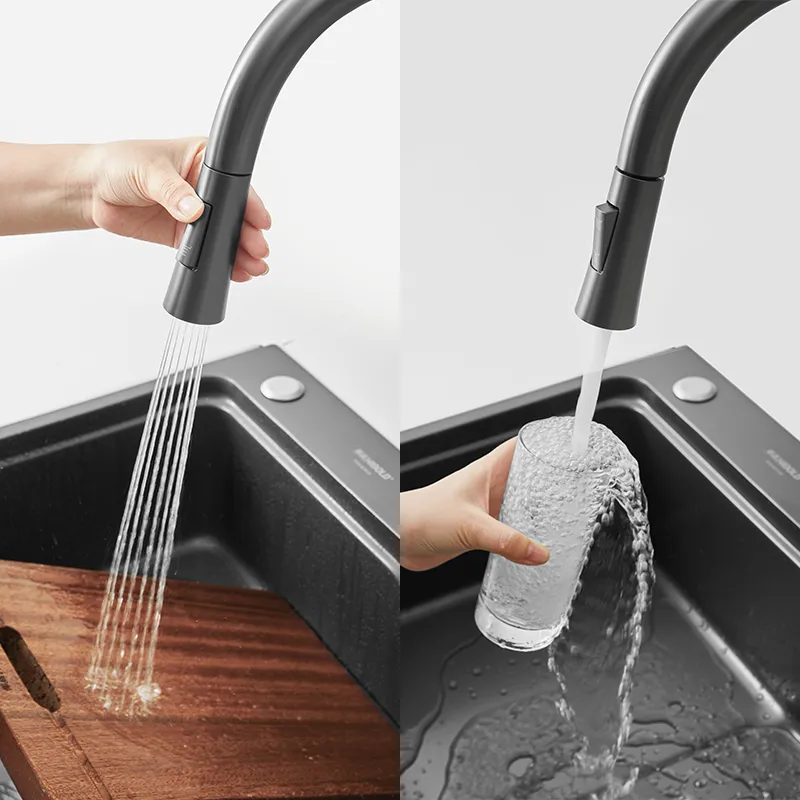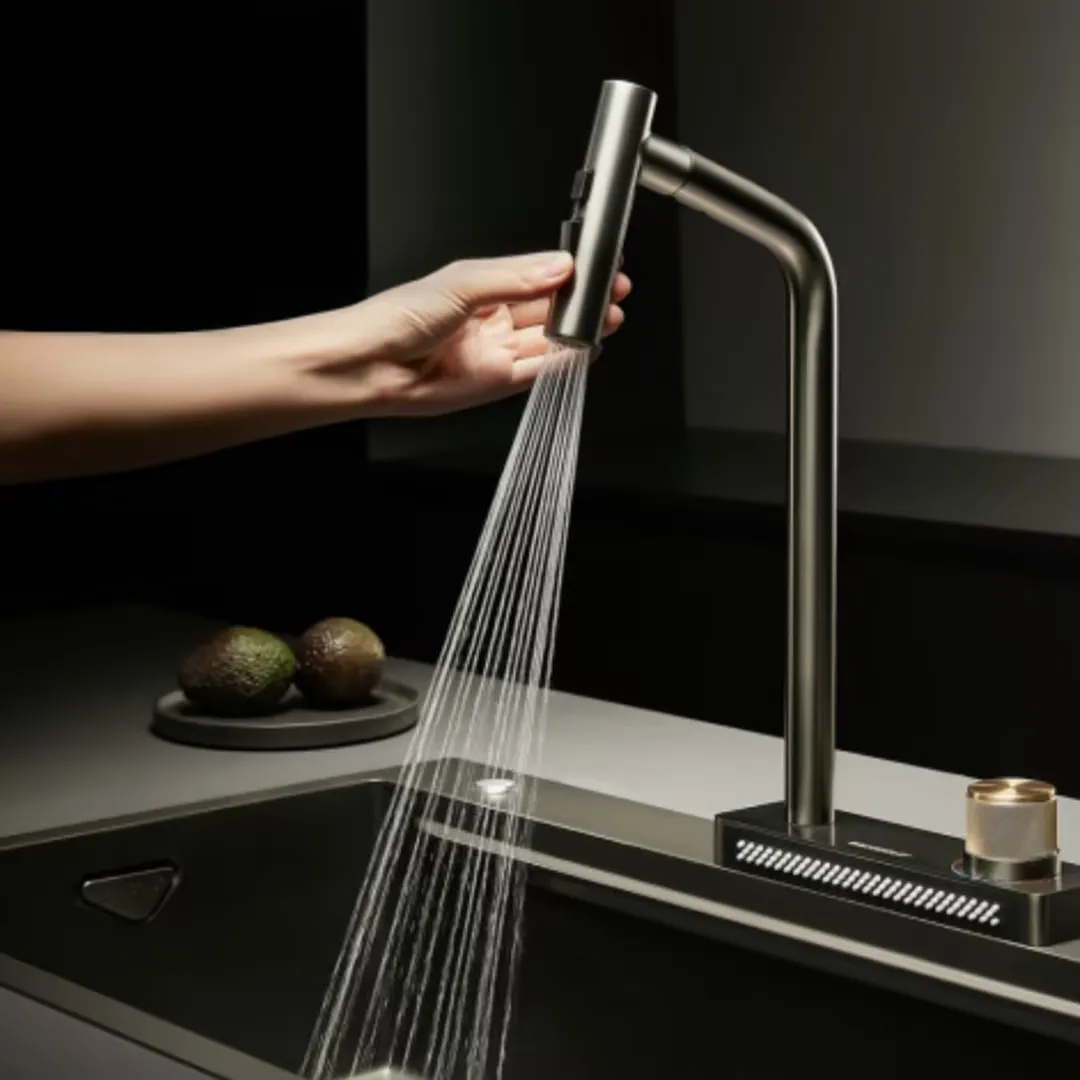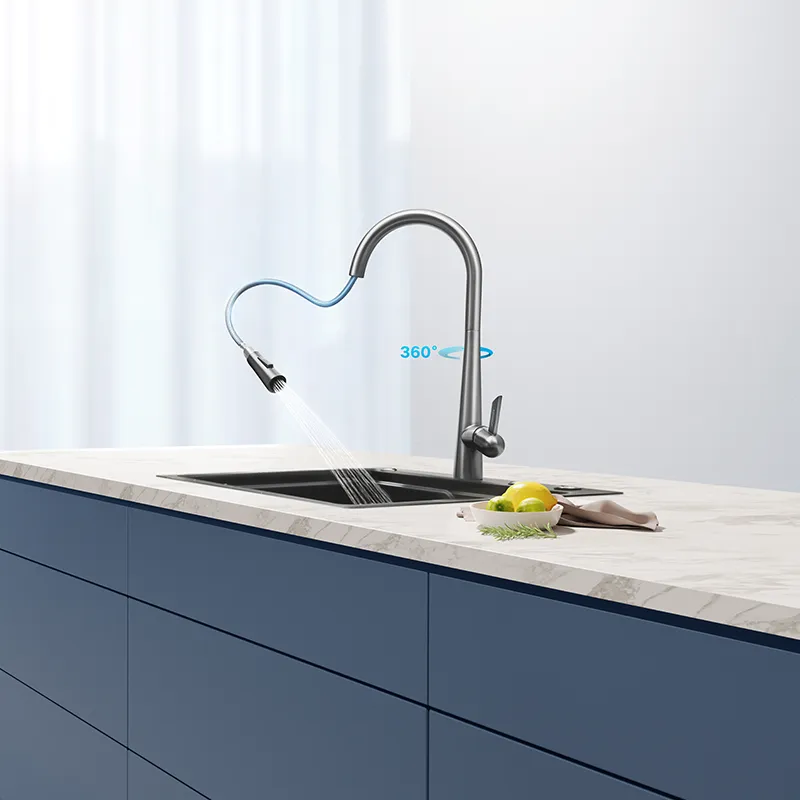In daily life, the kitchen faucet is one of the most frequently used appliances in every household. Whether washing vegetables, cooking, or washing dishes, the faucet plays a vital role. With time, many people may experience leaking kitchen faucets.
Leaking from the bottom of the faucet or under the sink not only affects normal kitchen use but can also lead to a series of adverse consequences, such as water accumulation and corrosion under the sink.
So, why does this happen? And how can it be addressed? This article will deeply analyze the causes of leaking from the bottom and under the sink of kitchen faucets and provide corresponding solutions.

What are the causes of leaking kitchen sink faucets?
Leaking kitchen sink faucets are not uncommon; nearly every household has a faucet that leaks. The causes of leaking from the bottom and under the sink may include installation, usage, and material aging. By analyzing these causes, consumers can better understand how to avoid leaking problems.
Causes of kitchen faucet leaks include:
1. Improper installation
2. Aging or damaged pipes
3. Deteriorated faucet seals
4. Faucet valve cartridge problems
5. Excessive water pressure
6. Water quality issues
1. Improper installation
Improper installation is a common cause of kitchen sink faucet leaks. Failure to ensure a tight fit between the faucet connections or use the appropriate gaskets and seals can lead to leaks. Improper installation procedures, such as not properly securing the base of the kitchen faucet to the sink or not properly sealing the connection between the faucet and the pipe, can cause leaks from the base of the faucet and under the sink.
For example, a poorly sealed or damaged gasket during installation can cause leaks. Improperly installed pipe joints can also cause water to leak under the sink.
2. Aging or damaged pipes
Over time, pipes can become fragile due to wear, aging, or corrosion. At this point, leaks may occur at the connection between the water pipe and the sink faucet. This is especially true at the connection between the base of the kitchen faucet and the pipe under the sink. After prolonged use, this connection is susceptible to factors such as water pressure and hot water flow, leading to water seepage at the joint.
Furthermore, the exterior material of the pipe may corrode due to prolonged exposure to air. This is particularly common in kitchens in older buildings, where pipe leaks are a common problem. For pipes installed under the kitchen sink, long-term use also increases the risk of pipe degradation, ultimately leading to leaks.
3. Faucet Seal Aging
The seal at the base of a kitchen faucet plays a crucial role, sealing the connection between the faucet and the sink. If the seal becomes degraded, deformed, or damaged due to aging or frequent use, it can easily lead to water leakage. Leakage from the bottom of the faucet is often closely related to seal aging.
Furthermore, some kitchen sink faucets use rubber gaskets. This rubber material can become hard and brittle with prolonged exposure to water and hot water, eventually losing its sealing effectiveness. High-temperature and hard water, in particular, can affect the seals, often accelerating their aging process.

4. Faucet Valve Core Problems
The valve core in a kitchen faucet is also a key component that can cause leaks. Located inside the faucet, the valve core regulates the flow of water. If the seal on the valve core is damaged or deteriorates, the water flow cannot be completely shut off, resulting in leaks. Especially after long-term use, the valve core may wear out from frequent opening and closing, leading to leaks.
5. Excessive Water Pressure
Excessive water pressure is also a common cause of leaks at the bottom of kitchen sink faucets. If household water pressure is too high, the impact of the water flow can exert excessive pressure on the connection between the faucet and the water pipe, causing cracks or water leakage. The faucet's inherent sealing performance is limited, and the effects of prolonged high water pressure can also damage the seal, further exacerbating the leak.
In older homes, the water pressure system may be unstable, and the resulting pressure fluctuations can affect the proper function of the kitchen sink faucet and pipes. Excessive household water pressure, especially when running the faucet suddenly, can cause leaks under the faucet and at the sink joints.
6. Water Quality
Water quality is also a significant factor in kitchen faucet leaks. Hard water contains a high concentration of minerals, which can adhere to the inside of the faucet and pipes as the water flows, accelerating their deterioration. Especially in areas with long-term hard water use, the pipes and joints at the base of the faucet are prone to corrosion or blockage, ultimately leading to leaks.
Additionally, impurities in the water can wear out the seals and valve cores of sink faucets, preventing the water flow from being completely sealed and causing leaks.

How to Fix Leaks from the Base of Faucets and Under the Sink?
If you encounter a leaking kitchen sink faucet, don't panic, as most problems can be resolved through inspection and repair. Below are several common repair methods; consumers can choose the appropriate solution based on their specific situation.
1. Check for Proper Installation
If you notice a leak from the base of your kitchen faucet or under the sink, first check the faucet for any problems with its installation. Ensure the faucet and sink connections are tight and the gaskets or seals are intact. If the seal is damaged or deformed, replace it immediately. If the leak is caused by an installation problem, reinstall the kitchen faucet and ensure the connections are tight.
2. Replace the seal or gasket
If the leak is caused by an aged or damaged seal, replace it. Choose a seal that fits your kitchen sink faucet model and ensure it is of the correct material and size. Replacing the seal is a common solution for leaks and is effective for most faucet leaks.
3. Check the faucet valve core
If there is a problem with the valve core inside your kitchen sink faucet, it may need to be replaced. Disassemble the faucet casing and inspect the valve core for wear or cracks. Replace it if necessary. Replacing the valve core is an effective way to fix the leak and restore normal faucet function.
4. Reduce the water pressure
If the leak is related to excessive water pressure, install a water pressure regulator to reduce the pressure. Excessive water pressure can not only cause leaks in your kitchen sink faucet but can also damage other pipes and appliances. Therefore, regulating the water pressure is an important step in resolving leaks.
5. Check the pipes and fittings
If the leak is located at the base of the kitchen faucet or at the pipe fitting under the sink, check the pipes for aging or damage. If the pipes are aging, it's recommended to replace them as soon as possible to prevent further damage and leaks. If the joints are loose or worn, use pipe sealant or thread tape to seal and repair them.
6. Clean the faucet and pipes
Regularly cleaning the kitchen sink faucet and pipes is also crucial for water quality issues. Use a dedicated faucet cleaner to remove mineral deposits and impurities, ensuring proper function. Also, use a filter to improve water quality and minimize damage to the faucet and pipes.

Is it possible to visit Higold’s exhibition showrooms before making a purchase?
Yes, international clients are welcome to visit Higold’s showroom facilities, located within its expansive manufacturing campus. These showrooms feature the latest product displays, material samples, and technical demonstrations. A visit allows buyers to directly assess product quality, manufacturing processes, and discuss purchasing options in person.
For buyers planning bulk orders or launching new brands, an on-site visit can provide valuable insights into the company’s capabilities.


